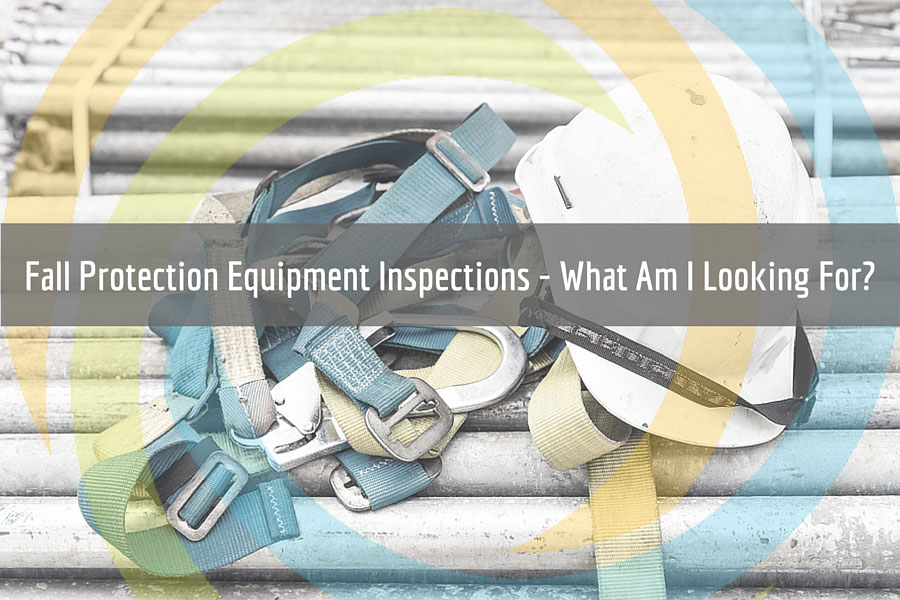Fall Protection Equipment Inspections- What Am I Looking For?

Inspections are required of every piece of equipment, but often overlooked in the rush to get to work. If your personnel are not properly trained and monitored, there is no telling what condition the equipment making it out in to the field is in. Many incidents involving equipment failure could have been prevented had somebody taken the time to ensure their equipment was in good, safe working order.
But our employees aren’t experts, right? I mean, how are they supposed to know what to look for? Well, “what to look for” should have been covered in training, so the first question to ask is: have they been trained? If so, then this article can serve as a refresher. If not, you need to go back and begin with training. For those that have been trained, let’s focus on fall protection equipment.
Harness
Begin with the hardware. Check any D-rings, buckles, grommets or other hardware for signs of deformity. Follow that up with the webbing. Does it look discolored, stiff, burnt, or have any substance spilled on it? Is all of the stitching intact? Are all of your labels in place and legible? Have you passed the manufacturer’s or employer’s recommendation for expiration?
A key thing to look for in your harness are the wear points. When you wear a belt and continually use one belt hole, the belt begins to wear at that point. This will happen to your webbing around the grommets in the leg straps, as well as in other areas of frequent adjustment. Make sure you are looking for this because it will definitely become a point of failure.
Lanyard
Check the hook. Does the locking gate work correctly? Attempt to open it when it is locked and when it is unlocked. Is there any deformity (including twisting of the lock so that the gate is no longer in line with the hook), corrosion, missing rivets or other damage to your hardware? Check the webbing, just as you did with the harness. Are there any signs of wear, stiffness, spilled materials, discoloration? Is all the stitching in place? Are there any cuts or holes? Pay close attention to the termination (where the end of the safety lanyard is stitched back to itself) to ensure it is in good condition. Check your shock absorber if applicable. Is the cover still intact? Are there any signs of damage? Has it been deployed? This last one is critical. If there are any signs that the shock absorber has been deployed, remove the lanyard from service immediately. Again, don’t forget the labels/tags.
For self-retracting lifelines (SRL’s), inspect the housing to ensure there are no cracks or other damage. Does everything function as designed, such as the swivel and retracting mechanism? Are any rivets or other fasteners missing? Is the anchor point in good condition? Again, look at the hook to ensure the gate functions properly and shows no sign of damage. If it’s webbing, inspect as you would a regular lanyard, but if it’s cable, are there any signs of cable fraying, separation, or other damage? Ensure that the entire cable can play out and test the locking mechanism. Finally, make sure all of your markings are legible and ensure there is no sign that the device has been deployed.
Anchorage
Hopefully you’ve determined that your roof anchor point itself is suitable and meets the necessary OSHA requirements. Even if you have, you should check the anchorage prior to use to ensure no conditions have changed. If you have any anchorage connectors, those must be inspected as well. This will be done in much the same way your lanyard and harness are. Check the webbing, cable, or other components as you would the harness and lanyard. Check for deformity, damage, discoloration, labels, markings, and signs of deployment. Make sure they are properly installed and are functioning properly (for instance, does your trolley actually roll along the steel?).
This is a cursory look at equipment inspections. It is critical that you ensure that your employees have the proper training to use, inspect, and maintain their safety equipment. After all, all the inspections in the world mean nothing if the inspector doesn’t know what he or she is looking at.
